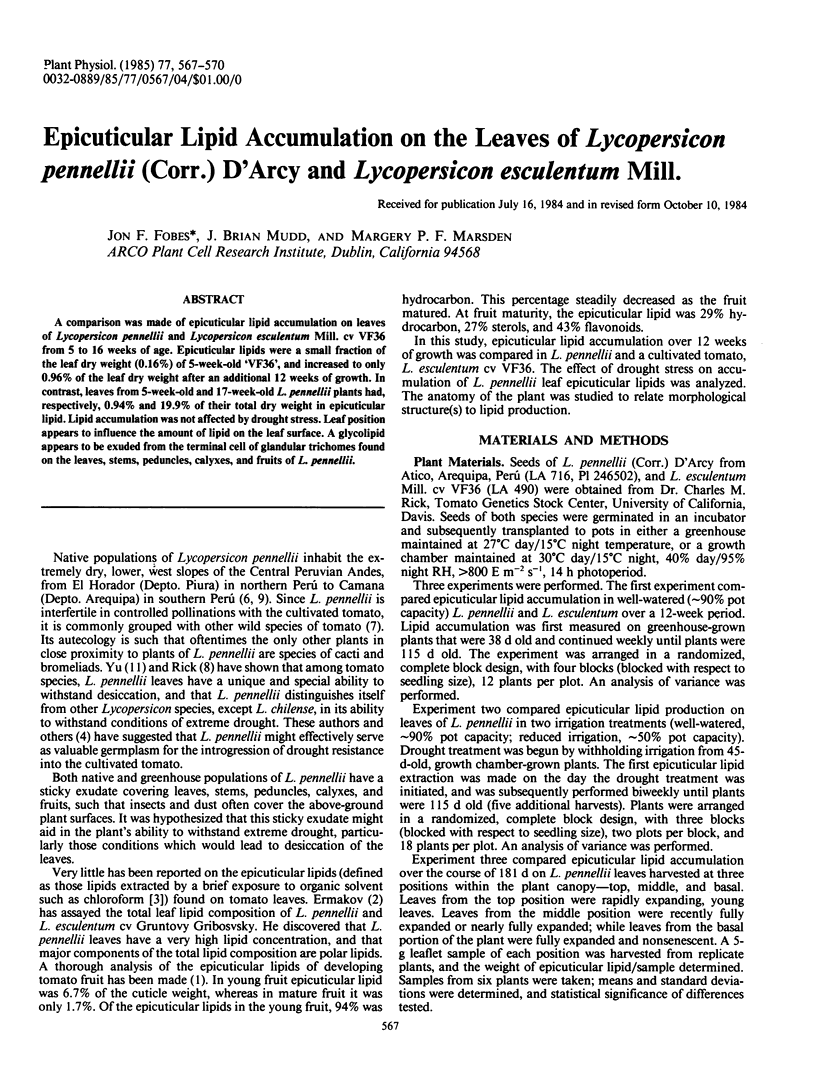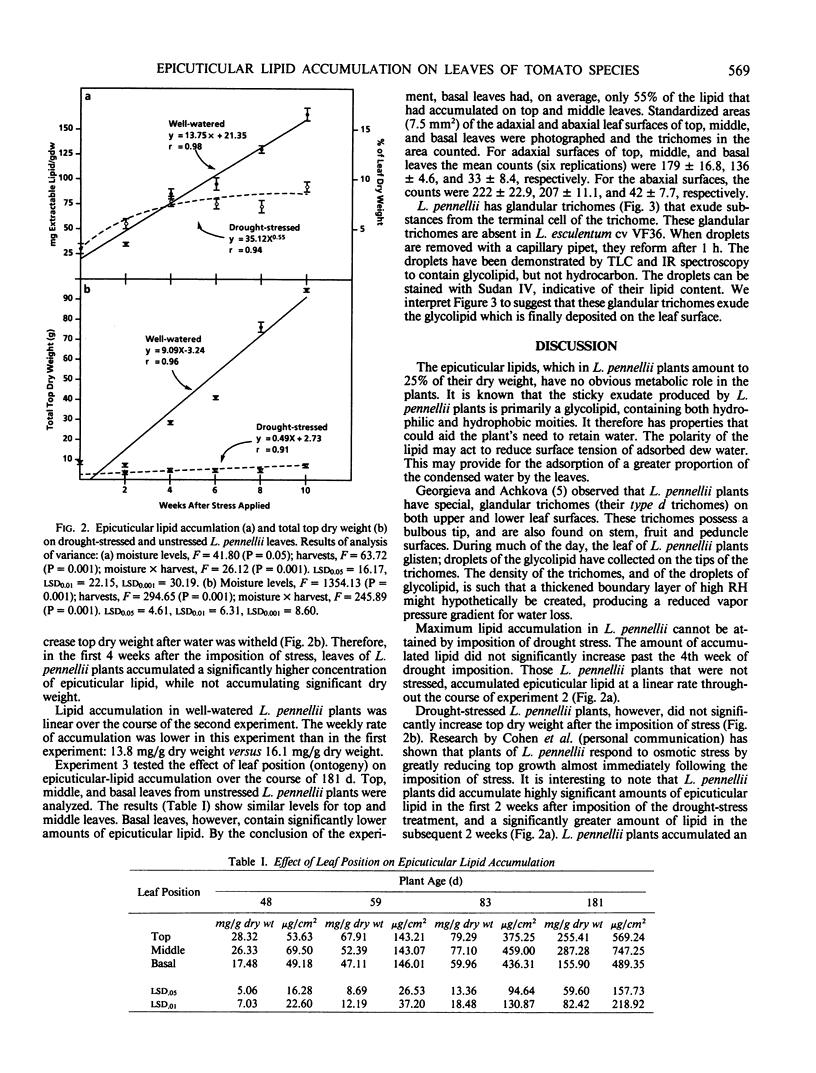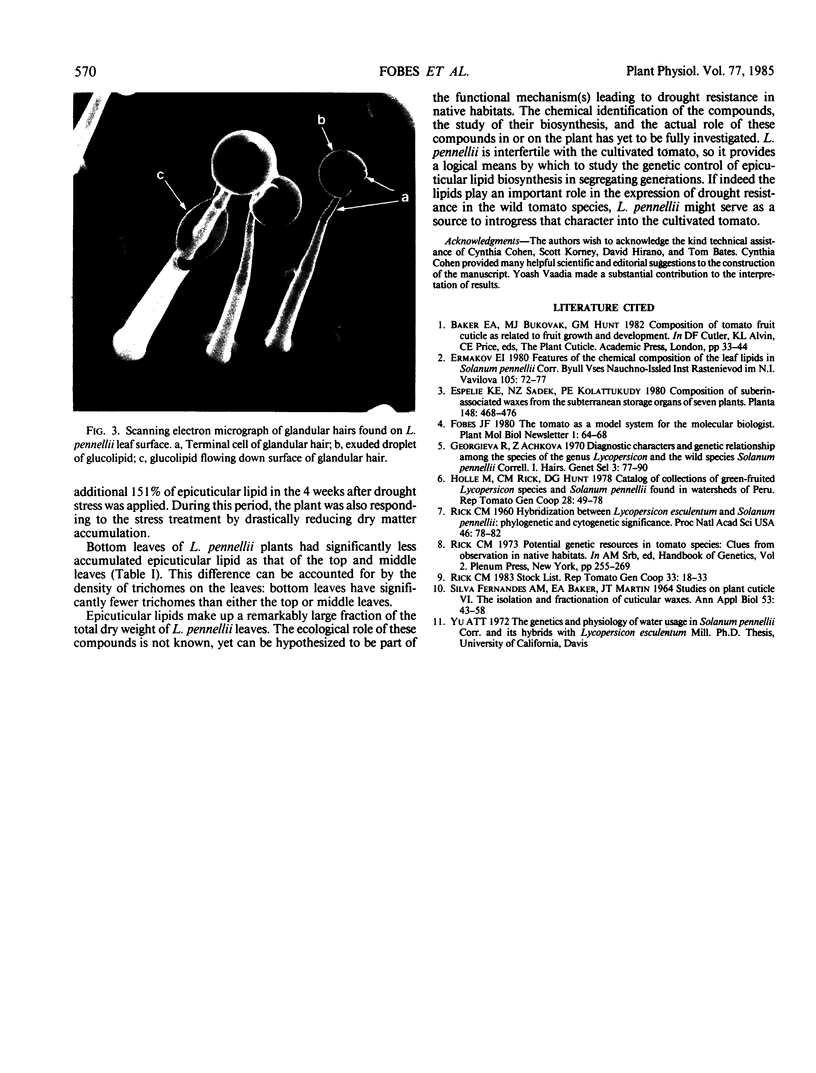Abstract
A comparison was made of epicuticular lipid accumulation on leaves of Lycopersicon pennellii and Lycopersicon esculentum Mill. cv VF36 from 5 to 16 weeks of age. Epicuticular lipids were a small fraction of the leaf dry weight (0.16%) of 5-week-old `VF36', and increased to only 0.96% of the leaf dry weight after an additional 12 weeks of growth. In contrast, leaves from 5-week-old and 17-week-old L. pennellii plants had, respectively, 0.94% and 19.9% of their total dry weight in epicuticular lipid. Lipid accumulation was not affected by drought stress. Leaf position appears to influence the amount of lipid on the leaf surface. A glycolipid appears to be exuded from the terminal cell of glandular trichomes found on the leaves, stems, peduncles, calyxes, and fruits of L. pennellii.
Full text
PDF



Images in this article
Selected References
These references are in PubMed. This may not be the complete list of references from this article.
- Rick C. M. HYBRIDIZATION BETWEEN LYCOPERSICON ESCULENTUM AND SOLANUM PENNELLII: PHYLOGENETIC AND CYTOGENETIC SIGNIFICANCE. Proc Natl Acad Sci U S A. 1960 Jan;46(1):78–82. doi: 10.1073/pnas.46.1.78. [DOI] [PMC free article] [PubMed] [Google Scholar]
- Rick C. M. Potential genetic resources in tomato species: clues from observations in native habitats. Basic Life Sci. 1973;2:255–269. doi: 10.1007/978-1-4684-2880-3_17. [DOI] [PubMed] [Google Scholar]



